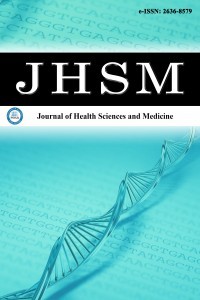How readable are antihypertensive drug inserts?
How readable are antihypertensive drug inserts?
Hypertension Drug package insert, Readability level,
___
- Wermelt JA, Schunkert H. Management of arterial hypertension. Herz 2017; 42: 515–26.
- Paudel P, Chalise S, Neupane DR, Adhikari N, Paudel S, Dangi NB. Prevalence of hypertension in a community. J Nepal Med Assoc 2020; 58: 1011–17.
- Verma N, Rastogi S, Chia YC, et al. Non-pharmacological management of hypertension. J Clin Hypertens 2021; 23: 1275–83.
- Lou M, Zong XF, Wang LL. Curative treatment of hypertension by physical exercise. Eur Rev Med Pharmacol Sci 2017; 21: 3320–6.
- Aydogdu S, Güler K, Bayram F, et al 2019 Turkish hypertension consensus report. Turk Kardiyol Dern Ars 2019; 47: 535–46.
- Iptes S, Khorshid L. Üniversite ögrencilerinin ilaç kullanim durumlarının incelenmesi. EGEHFD 2004; 20 : 97–106.
- Karakurt P. Hacıhasanoglu R, Yıldırım A, Sağlam R. Medication use among university students. TAF Prev Med Bull 2010; 9 : 505-12 .
- Özçetin K, Karakuş N. Readability of the 8th grade turkish textbooks. Türkiye Egitim Dergisi 2020; 5: 175-90.
- Carkıt C, Bahadır HI. An investigation on the readability levels of the national struggle and Atatürk theme texts in secondary school turkish textbooks. Cumhuriyet International Journal of Education 2022; 11: 103–11.
- Ateşman E. Türkçede okunabilirliğin ölçülmesi. Dil Dergisi 1997; 58: 71–4.
- Bezirci B, Yılmaz E.. Metinlerin okunabilirliğinin ölçülmesi üzerine bir yazılım kütüphanesi ve Türkçe için yeni bir okunabilirlik ölçütü. DEÜ Fen ve Mühendislik Derg 2010; 12: 49–62..
- Walsh TM, Volsko TA. Readability assessment of Internet-based consumer health information. Respir Care 2008; 53: 1310–5
- Flesch R. A new readability yardstick. J Appl Psychol 1948; 32: 221–33.
- Kasar KS, Karadakovan A. Elderly individuals investigation of antihypertensive drugs use error. J Cardiovasc Nurs 2017; 8: 20–7
- Solmaz T, Akın B. Medication use and ability of self-medication use in elderly living at home.Turkish Journal Of Geriatrics 2009; 12: 72–81
- Ay İE, Duranoğlu Y. Göz damlalarinin prospektüs formlarin okunabilirlik düzeyinin değerlendirilmesi. Anadolu Klin Tıp Bilim Derg 2021; 1: 55–9.
- Dural IE. Are consent forms used in cardiology clinics easy to read? Archives Turkish Soc Cardiol 2022; 50: 590-4.
- Boztaş N, Özbilgin S, Öçmen E, et al. Evaluating the readibility of informed consent forms available before anaesthesia: a comparative study. Turk J Anaaesth Reanim 2014; 42: 140–4.
- Ebem E, Tutar MS, Yıldız M, Canıtez A, Kara Ö, Kozanhan B. A readability assessment of intramuscular and intravenous injection informed consent forms. Anadolu Klin Tıp Bilim Derg 2019; 24: 132–6.
- Kara I, Kökoğlu K, Şan F, Orhan I. Türkiye' de kbb hastalıkları alanında sık kullanılan onam formlarının okunabilirliklerinin değerlendirilmesi. KBB Forum 2020; 19: 153-60
- Yeşilyurt ME, Karadeniz O, Gülel FE, Çağlar A, Kangallı Uyar SG. Mean and expected years of schooling for provinces in Turkey. Pamukkale J Eurasian Socioecon Stud 2016; 3: 1–7.
- Yayın Aralığı: Yılda 6 Sayı
- Başlangıç: 2018
- Yayıncı: MediHealth Academy Yayıncılık
Kamil DOĞAN, Murat BAYKARA, Cansu ÖZTÜRK
Bike ALTAN, Mehmet Ali FİLDİŞİ, Şevki ÇINAR, Elifnur AYDEMİR, Davut ÖZKAN
Can asymptomatic SARS-CoV-2 infection cause spontaneous abortion?
Rukiye Ada BENDER, Renginar AKBULAK, Ali SENGUL
Comparison of subjective and objective accommodation amplitude values
